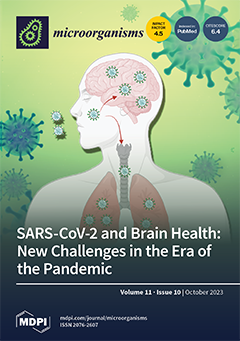Conjugated linoleic acid (CLA) is perceived to protect the body from metabolic diseases. This study was conducted to determine the effect
of Lactiplantibacillus plantarum (
Lp. plantarum) on CLA production and sensory characteristics of cheddar cheese.
Lp. plantarum can convert linoleic acid (LA) to CLA. To increase CLA in cheddar cheese and monitor the conversion of LA to CLA by
Lp. plantarum, the LA content of cheese milk (3.4% fat) was increased by partially replacing fat with safflower oil (85% LA of oil) at 0, 3, 6, and 9% concentrations (T
1, T
2, T
3, and T
4). Furthermore,
Lp. plantarum 10
8 colony-forming units (CFU)/mL (8 log CFU mL
−1) was added in all treatments along with traditional cheddar cheese culture (
Lactococcus lactis ssp.
lactis and
L. lactis ssp.
cremoris). After 30 days of ripening,
Lp. plantarum in T
1, T
2, T
3, and T
4 was 6.75, 6.72, 6.65, and 6.55 log CFU g
−1. After 60 days of ripening,
Lp. plantarum in T
1, T
2, T
3, and T
4 was 6.35, 6.27, 6.19, and 6.32 log CFU g
−1. After 60 days of ripening,
Lp. plantarum in T
1, T
2, T
3, and T
4 was 6.41, 6.25, 6.69, and 6.65 log CFU g
−1. GC-MS analysis showed that concentrations of CLA in the 90 days’ control, T
1, T
2, T
3, and T
4 were 1.18, 2.73, 4.44, 6.24, and 9.57 mg/100 g, respectively. HPLC analysis revealed that treatments containing
Lp. plantarum and LA presented higher concentrations of organic acids than the control sample. The addition of safflower oil at all concentrations did not affect cheese composition, free fatty acids (FFA), and the peroxide value (POV) of cheddar cheese. Color flavor and texture scores of experimental cheeses were not different from the control cheese. It was concluded that
Lp. plantarum and safflower oil can be used to increase CLA production in cheddar cheese.
Full article






